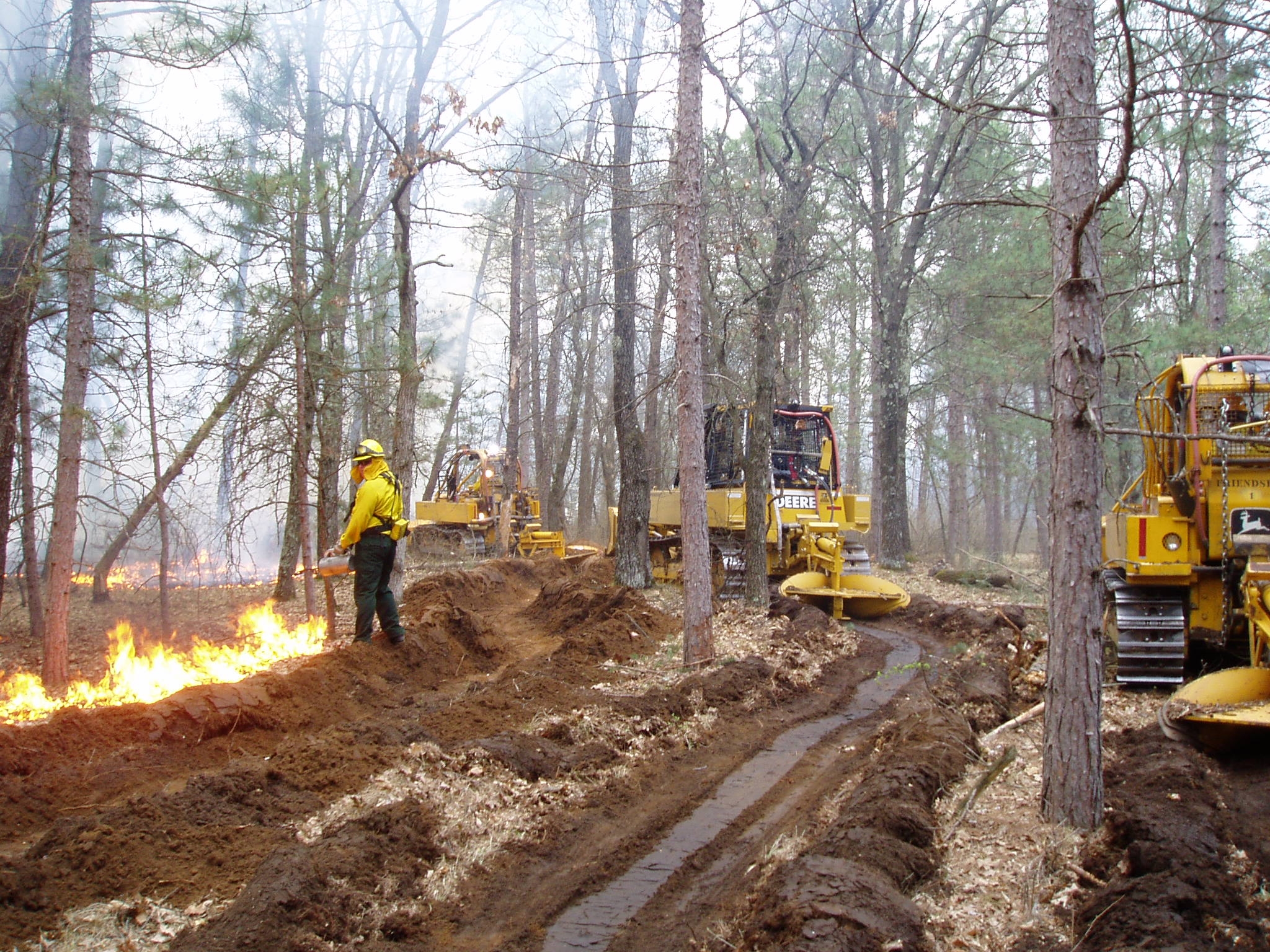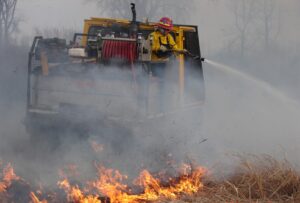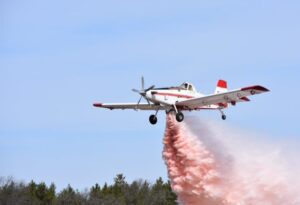By Catherine Koele, Wisconsin DNR wildfire prevention specialist
Wildfire activity in Wisconsin has been picking up – we’re currently reaching the peak of the fire season in northern Wisconsin. The DNR responded to nearly 70 wildfires over the weekend, and more are expected this week as elevated fire danger continues. Strong gusty winds, warmer temperatures, low humidity and very dry vegetation present challenging firefighting conditions.
So, what happens when a wildfire occurs? The DNR has various suppression tools to fight these unwanted human-caused wildfires.
The primary goal of the fire suppression program is to pre-position fire resources and attack these fires quickly from the ground to minimize fire growth. Crews also work to contain the fire to protect lives, property and natural resources from any damage.
When a wildfire is reported, the DNR’s fire control dispatch office is notified. The office will alert area fire personnel immediately. When a fire is reported, response times to a fire average ten to fifteen minutes.

The Type 6 Engine is typically the first unit to arrive at the scene of a DNR wildfire. (Wisconsin DNR photo)
A Forester-Ranger likely arrives first on-scene, driving a modified 4×4 named a Type 6 or 7 engine. This engine serves as the primary source of transportation for patrol, initial attack, checking smokes and law enforcement engagement. The unit effectively navigates off-road, carries roughly 150 gallons of water, pumps, drafts and applies water or foam. The DNR currently has 115 Type 6 and Type 7 engines in its fleet.
The DNR also uses a tractor-plow, or a “bulldozer,” that suppresses wildland fires. These are mainly for larger fires or smaller intense fires in hard-to-reach places. The back-mounted plow creates a 6-foot-wide mineral soil firebreak. These firebreaks, also called furrows, contain the fire and prevent it from growing. The front blade buries burning debris, creates fire lines and constructs roads.

Three tractor-plows digging furrows in tandem along the perimeter of a fire. (Wisconsin DNR photo)
In areas of larger timber, tractor-plows can move along the fire perimeter in tandem to create wider furrows to reinforce the fireline. The unit also carries 150 gallons of water for operator protection and suppressing small fires with a mounted hose. The DNR currently has 77 tractor-plows currently in its fleet.

The Type 4 Heavy Unit used to haul the tractor-plow on a tilt-bed trailer and for fire suppression. (Wisconsin DNR photo)
A heavy unit, also called a Type 4 engine, is a larger fire engine that hauls the tractor-plow on a tilt bed trailer. This unit suppresses wildland fires, particularly larger ones where the tractor-plow is needed. The unit carries 850 gallons of water and uses a pump to apply and draft water from lakes, rivers, swimming pools, etc. The pump also has foam capability, which prevents water from evaporating quickly and can be used to help protected structures. The DNR currently has 82 heavy units in its fleet.
Low-ground units are another tool the DNR uses. These come in many shapes and sizes, but all serve the same purpose of being able to operate on soft ground in marshes and swamps.

Low-ground units are intended for fighting fire on soft-ground or marsh areas. (Wisconsin DNR photo)
This unit is outfitted with a 260-gallon water tank, pump, hose reel, winch and a foam system. This slow but powerful piece of equipment has a 3-speed transmission and 4-cylinder diesel engine and tops out at 16 mph. The steel tracks supporting the rig are coated with rubber for extra grip and durability and often have a blade. The DNR currently has five low-ground units in its fleet.
The DNR doesn’t only fight fires from the ground. Air resources play an important role too. Air detection planes fly patrol routes and assist firefighters with scouting smokes, identifying hazards, guiding ground resources to a fire and monitoring fire behavior.

Single engine air tanker making a drop to slow the spread of a wildfire. (Wisconsin DNR photo)
Single-engine air tankers (SEATs) fight wildland fires from the air. They drop water to slow the fire’s progress and reduce fire intensity until ground units arrive on the scene. The tank holds 800 gallons of foam, water or fire retardant and can release a drop to cover an area 100 feet wide by 400 feet long. The plane’s top speed is 185 mph. The DNR contracts out for SEATs in the spring through private companies and pre-positions them according to fire danger throughout the state.
The DNR also has access to helicopters with bucket capability to drop 150 gallons of water onto a fire. There are also larger air tankers from partners in Minnesota and Ontario that can scoop water up from nearby lakes and drop up to 2,000 gallons.
Fire management personnel take a look at every situation on a case-by-case basis. They make informed decisions on the best strategies for the terrain, fire conditions and unique circumstances for every reported wildfire, using all of the tools at their disposal.
As fire season continues, the DNR will monitor and respond to the changing situation daily. Want to see where wildfires are actively burning in the state? Check out the DNR’s Fire Management Dashboard.
